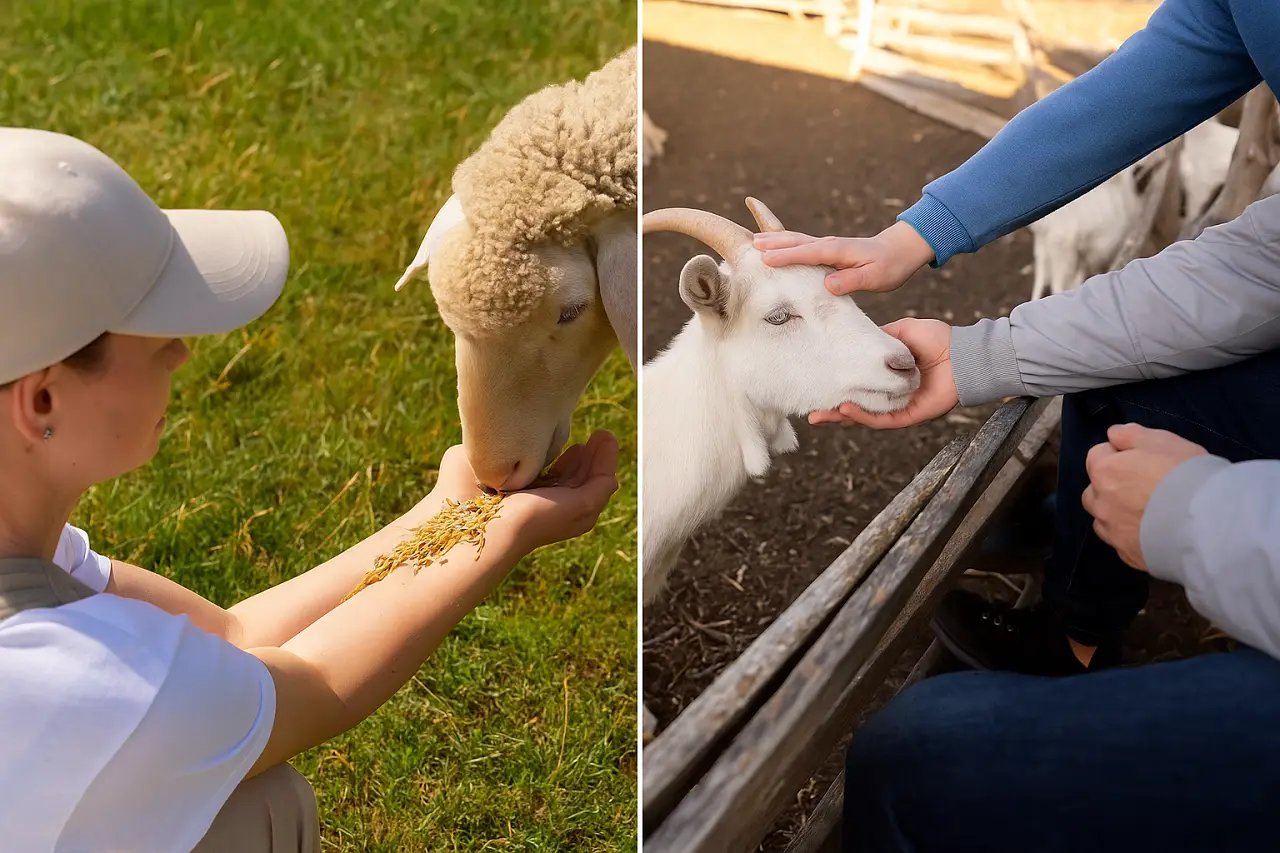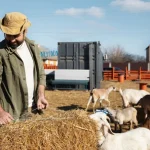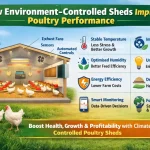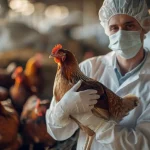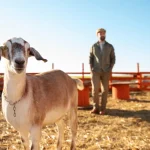Sheep and goat farming has become one of the most profitable and sustainable livestock sectors in India. Whether it’s for meat, milk, or fiber production, the success of any small ruminant farm largely depends on proper feeding and nutritional management. Good nutrition not only enhances growth and productivity but also ensures better immunity, reproduction, and profitability. At Royal Farms, we understand that the right feed strategy can make a significant difference in livestock performance. Let’s explore effective feed and nutrition strategies to maximize growth in sheep and goats, specifically suited for Indian conditions.
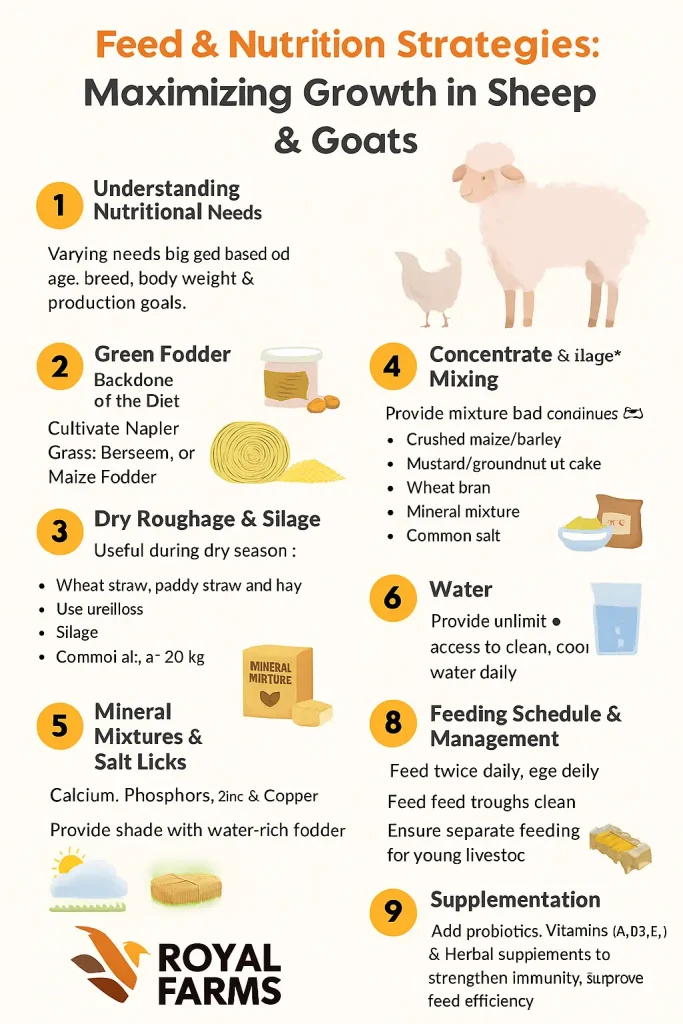
1. Understanding Nutritional Needs
Table of Contents
ToggleSheep and goats are ruminants, meaning they rely heavily on roughage — grasses, leaves, and fodder — for energy. Their nutritional requirements vary depending on age, breed, body weight, and production goals (meat, milk, or breeding).
- Growing lambs and kids: Require high protein (16–18%) for muscle and bone development.
- Pregnant and lactating females: Need extra energy and minerals for fetal growth and milk production.
- Breeding males: Require balanced energy and protein to maintain fertility and stamina.
Balanced nutrition should include:
- Carbohydrates: For energy (grains, maize, barley).
- Protein: For growth and muscle building (oil cakes, legumes).
- Vitamins & Minerals: For metabolic health (mineral mixture, salt licks).
- Water: Clean, fresh water at all times — a vital but often ignored factor.
2. Green Fodder: The Backbone of a Balanced Diet
In India, green fodder is available seasonally, so proper planning is essential. Farmers can cultivate high-yielding and nutritious fodder varieties such as Napier Grass, Berseem, Lucerne, or Maize fodder.
Tips for green fodder management:
- Grow multi-cut fodder crops for year-round supply.
- Mix leguminous fodder (high in protein) with non-leguminous fodder (energy-rich).
- Avoid feeding freshly cut wet fodder; wilt it slightly to prevent bloating.
Green fodder ensures better digestion and provides vitamins like A, D, and E, essential for the growth of sheep and goats.
3. Dry Roughage and Silage
During dry seasons, farmers often face a shortage of green fodder. Dry roughage like wheat straw, paddy straw, or hay can be used as a substitute. However, they are low in nutrients, so supplementation with protein-rich concentrate or urea-molasses treatment is beneficial.
For long-term preservation, silage is a great option. Silage made from maize or sorghum provides energy and can be stored for months without losing nutritional value.
4. Concentrate Feeding for Growth Boost
To enhance growth rate and weight gain, especially in commercial goat and sheep farming, concentrate mixtures play a crucial role.
A good concentrate mix (per 100 kg) may include:
- Crushed maize or barley: 40 kg
- Groundnut or mustard cake: 35 kg
- Wheat bran: 20 kg
- Mineral mixture: 2 kg
- Common salt: 1 kg
Feed 200–300 grams of concentrate per day for young animals, and up to 1 kg for adults, depending on production needs.
5. Importance of Mineral Mixtures and Salt Licks
Minerals like calcium, phosphorus, zinc, and copper are vital for bone growth, fertility, and wool/hair quality. A mineral mixture should be added to the diet regularly, and salt licks should be placed in the shed to allow free access.
These small additions significantly improve animal health, milk yield, and growth rates.
6. Water: The Most Overlooked Nutrient
Water constitutes about 60–70% of an animal’s body weight and is essential for digestion, milk production, and temperature regulation. Sheep and goats should have access to clean, cool water throughout the day, especially during summer months in India.
7. Seasonal Feeding Practices
Feeding strategies must adapt to India’s climatic variations:
- Summer: Provide green fodder with more water content like maize and Napier. Offer shade and ample drinking water.
- Monsoon: Avoid grazing in wet areas to prevent foot rot and parasitic infections.
- Winter: Use dry fodder and silage; add oilseed cakes and grains for warmth and energy.
8. Supplementation for Disease Resistance
Adding probiotics, vitamins (A, D3, E), and herbal supplements can strengthen the immune system and improve feed conversion efficiency. These supplements help prevent common diseases like enterotoxemia and parasitic infections.
9. Feeding Schedule and Management
Consistency is key. Feed animals twice daily — morning and evening. Overfeeding should be avoided as it can lead to digestive issues. Regular observation of feeding behavior helps detect early signs of illness.
Ensure:
- Feed and water troughs are clean.
- Feed is not contaminated or moldy.
- Young animals have separate feeding arrangements to ensure adequate intake.
Conclusion
A well-planned feed and nutrition strategy is the foundation of profitable sheep and goat farming. By combining green fodder, dry roughage, concentrates, and essential minerals — farmers can ensure steady growth, high productivity, and healthier livestock.
At Royal Farms, we provide expert guidance on feeding systems, farm management, and livestock health to help Indian farmers achieve maximum returns from their sheep and goat enterprises. With the right nutrition, every farm can become a model of success.

